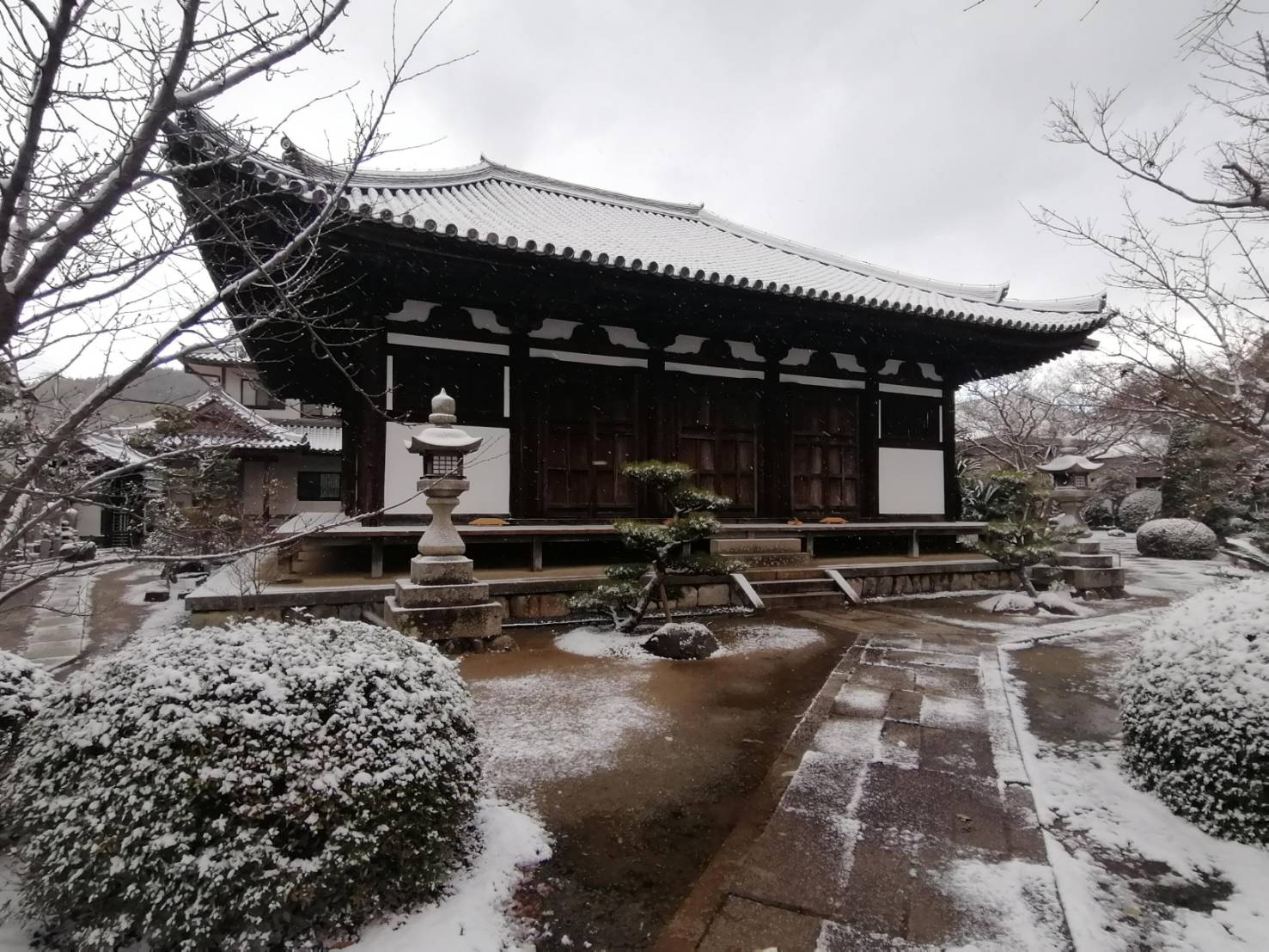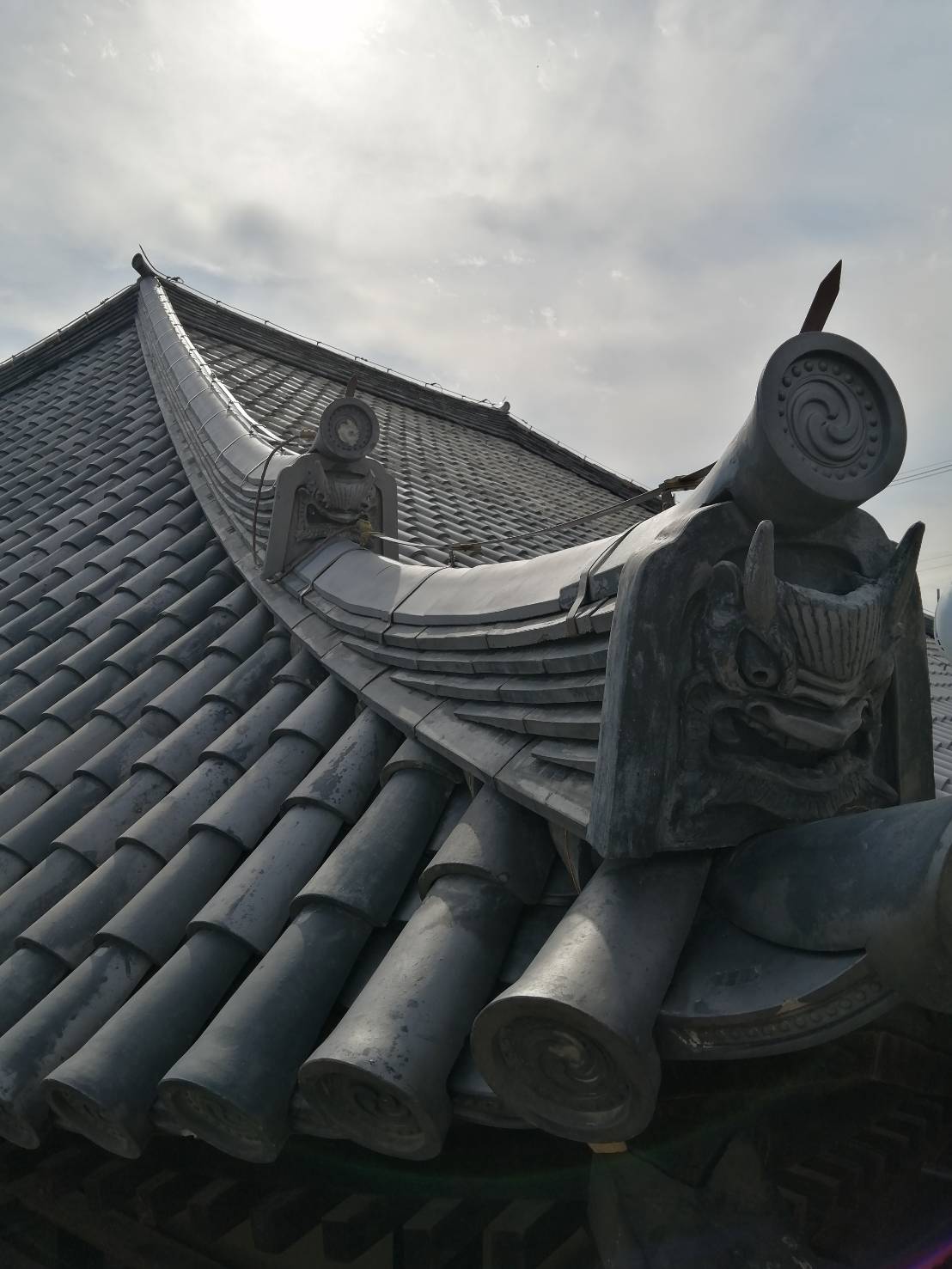
聖武天皇は奈良の都を中心として近畿地方に49の立派な寺院を建てることを発願し、その建築の一切を僧行基に委嘱しました。
神亀3(726)年、その四十九院の一つとして当地に観音寺が創建され、創建当時は金堂や塔、多くの僧房等七堂伽藍が立派にそびえていたと伝えられています。
ところが、室町時代には当地に所領を持つ山名氏や大内氏が乱を起こし、その後、豊臣秀吉が紀伊国の根来寺等を攻めた「紀州攻め」の戦場となり、境内の建物はすっかり焼かれてしまい、唯一鎌倉時代に再建された観音堂(釘無堂)だけが残りました。
また、戦火の中、仏像だけは助けねばと付近の川や池に投じ置き、後に救い出された20躯の仏像群が堂中におさめられました。

孝恩寺は
明暦元(1655)年に初代孝恩上人によって、観音寺の隣接地に創建された浄土宗寺院です。創建以来、木積村の檀那寺として、村人たちとともに荒廃する観音寺を守り続けてきました。
近代に入ると、明治22(1889)年に観音寺は廃寺となりましたが、大正3(1914)年に本寺が旧観音寺の観音堂を仏像群等とともに合併しました。
孝恩寺は、木積村の檀那寺としての務めを果たすとともに、歴史的な建築物である国宝の観音堂(本堂)と平安時代に制作された仏像群等を守り続けてきた歴史ある寺院です。
English
Emperor Shomu expressed his desire to build 49 magnificent temples in the Kansai region, centered around the capital of Nara, and entrusted all aspects of their construction to the monk Gyoki. In 726 AD, one of these 49 temples, Kannonji Temple, was established in the area, with seven buildings including a main hall, a tower, and many monks' quarters.
However, during the Muromachi period, the Yamana and Ouchi clans, who owned land in the area, caused a rebellion. Later, during the Kishu campaign, in which Toyotomi Hideyoshi attacked the Negoro-ji Temple in Kii Province, the temple grounds were completely burned down, leaving only the Kuginashi-do, or Kannon Hall, which was rebuilt in the Kamakura period.
During the chaos of war, the nearby rivers and ponds were used to save the Buddhist statues, and a group of 20 rescued statues were later placed in the temple. In 1655, the Jodo Buddhist temple Koon-ji was founded next to Kannonji by its first leader, where it has remained as a protector of the decaying Kannonji along with the local villagers. In modern times, Kannonji was closed as a temple in 1889, but in 1914, Koon-ji merged with the Kannon Hall and the statue group from the old Kannonji.
Koon-ji has continued to fulfill its role as a temple for the local village and has safeguarded historical architectural treasures, such as the Kannon Hall, a national treasure, and the group of Buddhist statues made in the Heian period.
木積
当寺周辺は古くから「木島杣山」と呼ばれ、豊かな山林から良質の木材を産出する地域で、 その木材の集積地であったことから当地は「木積」と呼ばれました。そして奈良時代、木島杣山から伐りだされた木材は、近木川を下り、僧行基が建造した港「神前船息」から畿内各地へ運ばれて、聖武天皇勅願の四十九院の造営やかんがい土木工事をはじめ朝廷による寺社の建立に使われたと伝えられています。
English
The area around the temple has long been known as "Kinoshima no Soma-yama," a region rich in forests that produce high-quality timber. Because of its role as a gathering place for this valuable resource, the area came to be called "Kotsumi." In the Nara period, the timber harvested from Kinoshima no Soma-yama was transported down the Kogi River to the port of Kozaki-no-Funasue, built by the monk Gyoki, and then shipped to various parts of the Kinai region, where it was used for construction of the forty-nine temples commissioned by Emperor Shomu and for other imperial construction projects as well as for the establishment of temples and shrines.

